I like to sit by the fireplace during the long nights of December and read my notes and reflect on the past growing year. Did I grow enough onions for the family? I suspect I watered my USDA 88-2 mandarin tree too much. How much water did it get? Should I plant potatoes at the same time next year as last year?
Whenever I sow or plant any vegetable or fruit tree, I record it. I write down when I water and how much I water, and I take notes on harvests and on the weather every day — the high temperature and the low, any significant wind or unusual humidity, the amount of rainfall.
I acknowledge that it’s a little obsessive, but I try to get it all recorded because my memory is not so reliable. And the records allow me to revisit the past, look for patterns, put the present into perspective, and make better predictions.
What will this December in Southern California be like? Most Decembers in the past ten years have had 1-3 inches of rain, a couple of minor Santa Ana wind events, and temperatures just low enough to stop banana plants from unfurling new leaves.
Recent extremes include December 2017, which was dry and intensely windy, driving the Thomas Fire in Ventura and Santa Barbara Counties. And December 2021 rained almost continuously from the 9th until the end of the month, for a precipitation total of 6.5 inches at my place in San Diego County.
What should we do in our food gardens this December? Based on what has worked in most recent Decembers:
Sowing and planting
-Sow or plant: beets, broccoli, cabbage, cauliflower, carrots, cilantro, garlic, greens (chard, collards, kale, mustard), lettuce, onions, parsnips, peas
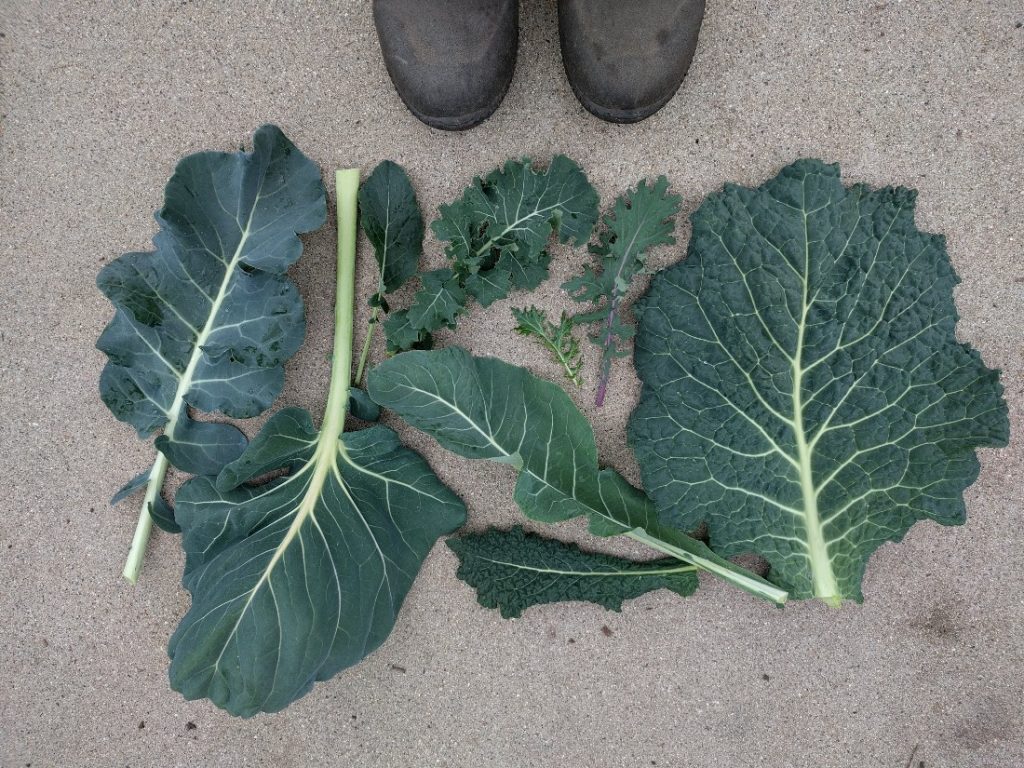
-Plant natives: December is the ideal month because the plants will have the mild weather and rain of winter and spring to get used to their new home
-Sow California poppies right before a rain is forecast: buy a packet of seeds and sprinkle them, don’t bury them; the rain comes and sticks them to the soil and triggers them to germinate; by the spring they’ll be glowing orange; this is how I’ve grown all of my poppies
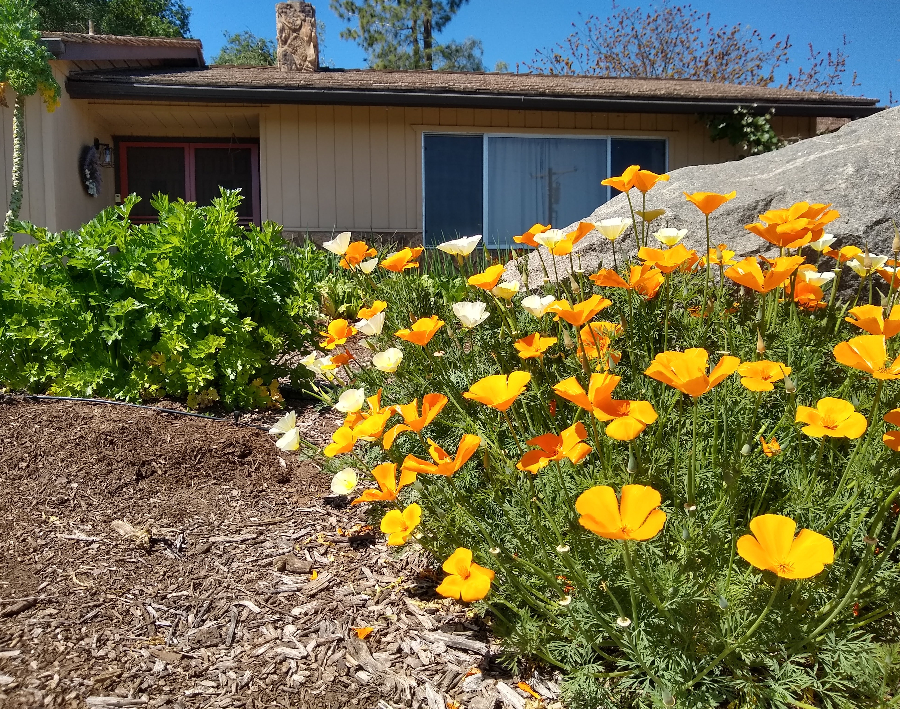
-Transplant strawberry runners if you’d like to expand or renew your strawberry patch
-Plan for January planting of bare root or dormant berries (blackberries, raspberries, blueberries), grapes, and deciduous fruit trees (plums, apricots, apples, peaches, etc.); think about which varieties you want and where you want to put them; you might even buy and plant them this month, but January is when they’re definitely available; you might read my posts, “What kind of fruit tree should you plant?” and “Bare root season is here!”
-If your local nursery doesn’t carry bare root plants, consider ordering them from Peaceful Valley or Four Winds Growers; I’ve ordered from both and can recommend them
Harvesting
-Harvest vegetables: beets, broccoli, cabbage, cauliflower, carrots, corn, greens, green beans, green onions, lettuce, peas, peppers, potatoes, spinach, sweet potatoes, tomatoes
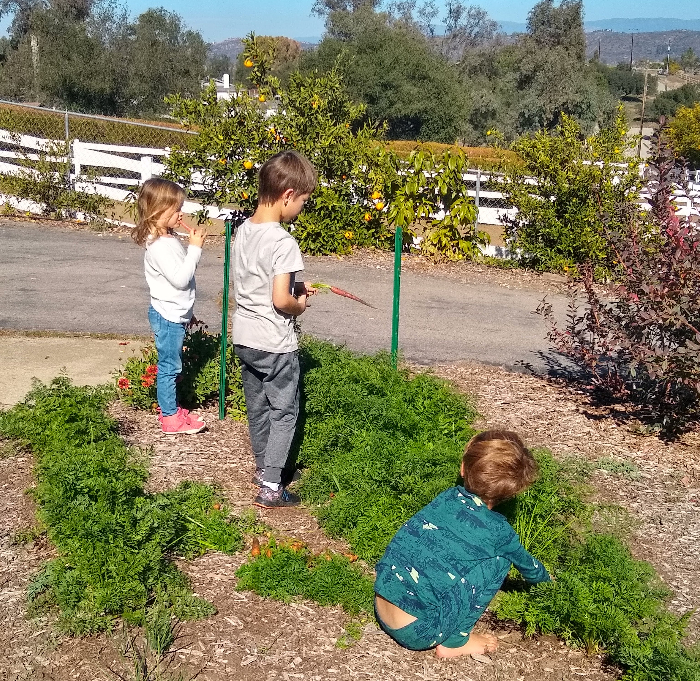
-When I harvest from the vegetable garden, I try to remember that it’s because I sowed or planted a few months ago; I thank my past self; and if I want to make my future self happy, I need to sow and plant some more today
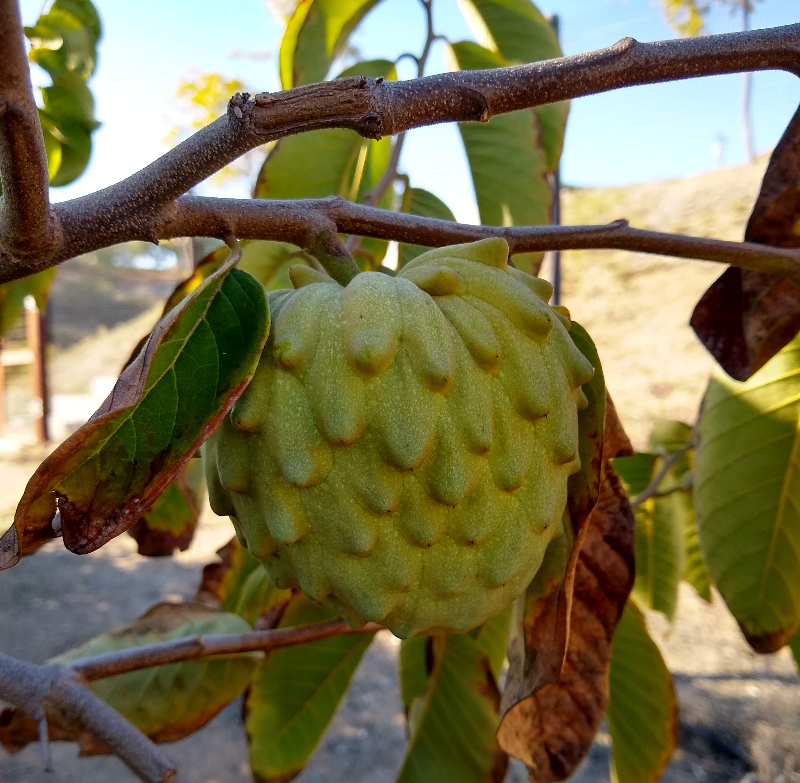
-Harvest fruit: Pink Lady apples, Fuyu persimmons, pomegranates, passion fruit, cherimoyas, macadamia nuts, mangos, mandarins (Satsuma, Kishu), limes, guavas, avocados (Bacon, Fuerte, Stewart, Mexicola Grande . . . and maybe late Reeds or Lambs . . . and maybe early Hass)

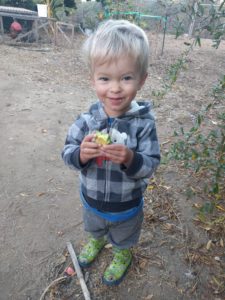
-Don’t be fooled by the orange peels of mandarins/tangerines and oranges this time of year; some are still not sweet yet; see my post “When to pick oranges and tangerines”
Miscellaneous
-Start a compost pile: it can be as easy as finding a corner of your yard in which to pile up fallen leaves, food scraps, weeds that don’t have seeds, and tree trimmings, and then letting them sit; after some months, maybe up to a year, you’ve got compost; if you want it sooner, you can make the process more effortful — but it doesn’t need to be; December is a nice time to start because winter rains will keep it moist for you; see my post, “Simple Composting”

-Make a shadow map: near the winter solstice of December 20, note how far shadows reach across your yard, in the morning, at noon, and in the late afternoon; trees and buildings make the biggest and longest shadows; the function of this is to guide your future plantings, as some plants enjoy being in chilly winter shade (like deciduous fruit trees) while others can suffer (like a banana that remains in shade through a frosty winter morning)
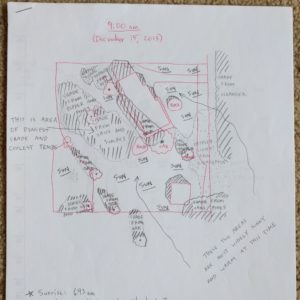
-Be prepared to protect some plants from cold: our coldest nights usually occur within a month of the December 20 winter solstice; my post on protecting avocado trees from cold has ideas that can be applied to other sensitive plants like coffee, bananas, and mangos
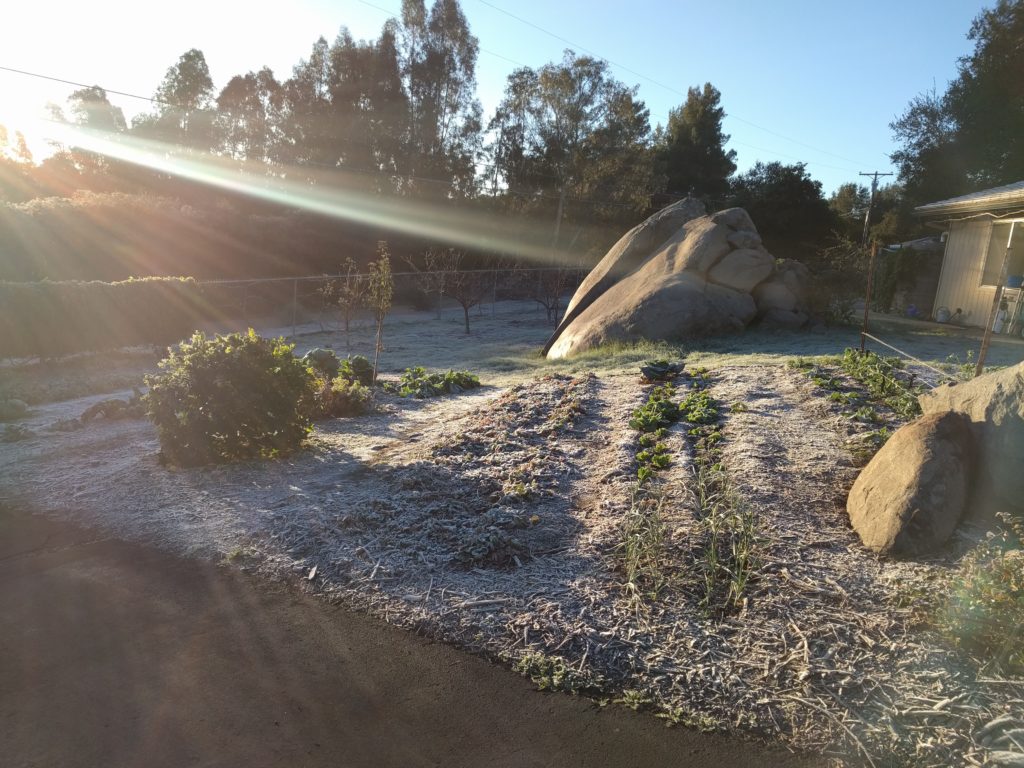
All of my Yard Posts are listed HERE
Thanks for your support!



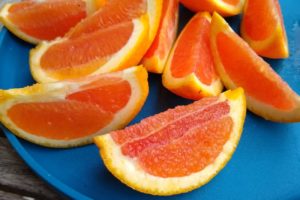
So helpful Greg! Thanks!
Thanks, Renee. Can you believe it’s almost time to plant bare root fruit trees again? Any additions for your yard? I’m definitely buying a cherry, but I’m not yet sure what else.
Ooo, I’m excited to hear about how cherry goes for you. We just planted a royal crimson cherry and are hoping it goes well even though we don’t get many chill hours in Costa Mesa.
Hi Jordan,
I have a Royal Crimson cherry tree that is four years old now but has only produced a few cherries. I don’t know why it’s being slow to come into production but I’m not worried quite yet since I know Minnie Royal and Royal Lee cherry trees that produce very well in locations with much less chill than my location (and yours). Tell me how your tree does over the next couple years. I will note that the cherries from my Royal Crimson were delicious.
Really appreciate your information, Greg. I live in Ojai and wondered why the natives I planted in summer did so poorly. Best take them off the watering system. Thanks for your help!!!
Hi Julie,
Sorry about your natives, but glad I could be of help! I’ve tried planting natives in every season over the years, and in the summer my batting average is something like .500. As for winter, on the other hand, I have a perfect record. The only winter-planted native I’ve ever lost was a manzanita that a gopher ate a couple years back.
Part of the reason for this, I’m convinced, is that I’ve settled on the routine of planting in winter and then being very stingy with water during the summer. They get water about once per month their first summer, and then only water once during the whole summer, if that, for the rest of their lives. Sounds a bit harsh, but it’s natural: that’s our Southern California climate.
Thanks so much for your posts. Really helpful!! I’m completely new at gardening:). I’m in OC and have a raised container garden (6’x2′). My first attempt was this summer (tomatoes, cucumbers and one icebox watermelon). The tomatoes grew great (and still growing!). I’d like to plant winter vegetables and I’m wondering if I should amend the soil? If so, do you have a recommendation? Eventually, I’d like to try composting but for now, is there something organic I should use? Also, do I pull the summer plants out and trash them or churn them into the soil? And will the tomato plant keep producing and I can just leave it alone? Thanks so much!!
Hi Emily,
Sounds like you had a great first summer. There are no right answers to most of your questions; it’s mostly a matter of style. So I’ll just tell you my current style, but do understand that this is not the only effective way, and even my own style has changed over the years.
I add a layer of one to two inches of compost over the top of the soil in my garden once or twice each year. Usually I do it when I plant winter stuff and again when I plant summer stuff. No problem if you don’t make your own compost; you can buy bags of it at any nursery or garden center.
I cut the summer plants off at the soil level rather than pulling them out (roots and all). The roots decompose in the soil and ultimately become nutrients for future vegetables. No need to do any churning.
Your tomato plant will keep producing as long as it remains healthy and your yard doesn’t get exceptionally cold in the next couple months. So if you don’t need its space then just leave it alone.
Here are some posts related to your questions that you might enjoy reading:
https://gregalder.com/yardposts/when-to-plant-tomatoes-in-southern-california/
https://gregalder.com/yardposts/dont-dig-garden/
https://gregalder.com/yardposts/fertilizing-vegetables-with-compost-pros-and-cons/
Thanks so much, Greg! I’m heading to the garden center with this info 🙂
Love reading your posts Greg. Very helpful! And love our new calendar from you!
Excellent information, as always, Greg. Thank you.
I live in Chula Vista and have a south-facing backyard and have a question about when to plant my avocados in the ground. I have several varieties, most in #15 pots. Do you think it would be ok to plant them in the coming weeks (Dec/Jan), or would it be best to wait until March or so, when it warms up a bit?
Thank you!
Hi Gerg,
Im using some of your tips for my December Del Mar Mesa garden Club newsletter. Thanks so much
I grow Fuji apples and right about now they are reaching the point of taste perfection. I had to use a chemical poison during bloom but, based on experience, the coddling moths don’t come back for a long time. It breaks a cycle. Hate to use poisons but the alternative has been apples with worms.
Aaah, we recently finished our Fuji apples. I’m jealous! Somehow we’ve been lucky to have no worms in our apples, but I’m glad you’ve figured out a fix for yours.
Thanks for the post Greg. My fuyu persimmon and my neighbors fuyus. All became ripe earlier than normal I think. We had ripe persimmons for Halloween but anything left on the trees now is overripe.
Have you seen the same thing in Ramona?
Hi Walter,
I can’t say I’ve seen this in Ramona. In fact, the persimmon farm near me stayed open for U-Pick longer than ever this year although they also said that it was partly because the crop was so big.
I did get some nice ripe Fuyu persimmons from a friend’s tree in La Mesa on Halloween though, so maybe they were earlier in some places and not in others.
Yes; Late. My navel oranges are not ready at all. The trees are the last part of our grove that was always picked between Thanksgiving and Christmas. One year it was before Thanksgiving! But this year they are small, bitter and not juicy at all. We’ll see if they get better in the next month.
Also the fuerte is a month or 2 behind. We usually start picking them about Halloween. Today they are still the size of pears.
I guess it is good to know we are not alone in this.
Just wondering if you put your ash from the fireplace in your garden? Is it good for the soil? I’ve read mixed reviews on the topic…
I do, Eric. It all goes to the yard. Sometimes I add it to my compost, sometimes I just spread it in small bits under different fruit trees.
I’ve also read about it raising pH etc., but I’ve been doing it for so long and never noticed a bad response that I continue undeterred!
I just read your fantastic blog. I’m looking for advice on winter watering and fertilizing. I’m new to this I have raised beds with drip lines within an enclosure because all of my veggies were being consumed by rats. I’m in the San Fernando Valley but have lots of shade during the winter so I installed grow lights in one of my enclosures. Everything looks sad this year. I’m I under watering? What should I feed my plants. I have beets, carrots, radishes and onions near each other. I have some cabbage, kale, arugula, lettuce and green beans. Looking forward to your advice.